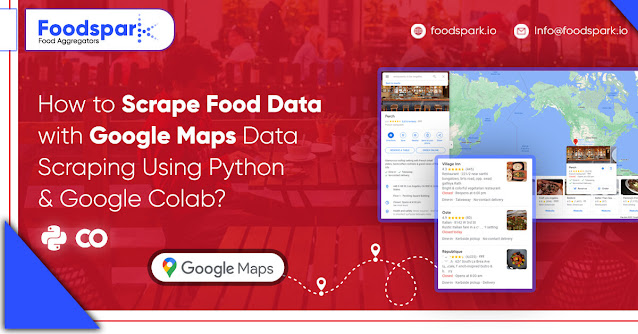How to Scrap Food Data with Python & Google Collab
In today's digital age, data is king. Companies and businesses rely on data to make informed decisions and stay ahead of the competition. But where does this data come from? One source is web scraping, the process of extracting data from websites. In this article, we will explore how to scrap food data with Python and Google Collab, a free online platform for coding and data analysis.
What is Web Scraping?
Web scraping is the process of extracting data from websites using automated tools or scripts. It allows you to gather large amounts of data quickly and efficiently, without having to manually copy and paste information from websites. This data can then be used for various purposes, such as market research, data analysis, and more.
Why Scrape Food Data?
Food data is a valuable source of information for businesses in the food industry. It can provide insights into consumer preferences, trends, and market demand. By scraping food data, businesses can stay informed about their competitors, track prices, and make data-driven decisions.
Setting Up Google Collab
Before we can start scraping, we need to set up our environment. Google Collab is a great option for this as it provides a free online platform for coding and data analysis. To get started, go to https://colab.research.google.com/ and sign in with your Google account. Once you're in, create a new notebook by clicking on "File" and then "New Notebook."
Installing Necessary Libraries
To scrape data with Python, we will need to install a few libraries. In your Google Collab notebook, run the following code in a code cell:
!pip install requests !pip install beautifulsoup4
This will install the necessary libraries for web scraping.
Scraping Food Data
Now that we have our environment set up, we can start scraping food data. For this example, we will scrape data from a popular food delivery website, Grubhub. We will extract the name, price, and description of the top 10 items from a specific restaurant.
First, we need to import the necessary libraries and define the URL we want to scrape:
import requests from bs4 import BeautifulSoup
Next, we will use the requests library to get the HTML content of the webpage and then use BeautifulSoup to parse the HTML:
page = requests.get(url) soup = BeautifulSoup(page.content, 'html.parser')
Now, we can use find_all to find all the items on the menu and loop through them to extract the desired information:
items = soup.find_all(class_="menuItem") for item in items[:10]: name = item.find(class_="menuItem-name").get_text() price = item.find(class_="menuItem-price").get_text() description = item.find(class_="menuItem-description").get_text() print(name, price, description)
This will print out the name, price, and description of the top 10 items from the restaurant's menu.
Conclusion
Web scraping is a powerful tool for extracting data from websites. In this article, we explored how to scrape food data with Python and Google Collab. By following these steps, you can gather valuable information for your business and stay ahead of the competition. Happy scraping!

.png)

Comments
Post a Comment